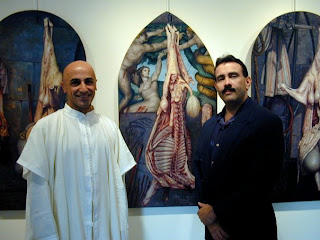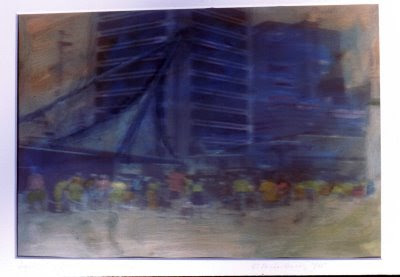No hot sauce allowed
When I was in my late teens, my parents took their first ever (and only one as far as I know) vacation, and went to Mexico City for a couple of weeks. They liked it so much that they ended up staying almost a month and I joined them for a week.
Besides my well-documented discovery of Frida Kahlo during that trip, I also recall my dad's first ever exposure to Mexican food.
There are many people in this great nation who (if you live in any American state except Florida, New York and New Jersey) think that all of Latin America is like Mexico, both in culture, appearance and culinary offerings.
Of course, nothing can be farther from the truth, and (for example) Argentina is as different from Mexico as Italy is different from South Africa. In fact, most of the twenty or so nations south of the border and in the Caribbean are not only vastly different from its two giant northern neighbors, but also quite different from each other.
And their national cuisines are also quite different. Not everyone in Latin America eats tacos, and if you order a couple of tortillas in Cuba, you'll get two omelets and an odd look at your excessive dining peculiarities.
Anyway, I recall my father working his way through the menus in his discovery of Mexican food, from his first experiments with huevos rancheros, the subsequent alarm at the heat of the hot sauce, followed by a trip to the restaurant's bathroom to rinse his mouth, to his delight in discovering the less fiery carne asada and carnitas.
If you read this blog regularly, then you know what a pedantic geek I can be at Hollywood's barbarity when it comes to cultural stereotyping (this one is the worst one ever). And these days, through the wonders of FiOs and DVR digital recording, I more often than not find myself in pedantic hell.
You see, I have my DVR set to record programs keyed on a variety of keywords, one of them being Cuban cooking.
Recently, my DVR picked up a segment of Louisiana chef Emeril Lagasse's entertaining cooking show. It was focused for that day on Cuban food.
He showed his audience how to cook a fish, ropa vieja and pork chops. And the processes involved in those three dishes seemed authentic enough, until the hot sauce came out for all three recipes.
I don't watch Emeril often enough to know if this Louisiana native resident puts hot sauce on all his dishes, and if he does, then maybe it's a Louisiana thing.
Perhaps he puts hot sauce on pizza, and matzoh ball soup and haggis, etc.
But no authentic Cuban recipe calls for the fiery, Louisiana or Mexican or Texan style hot sauces that brings tears to your eyes, torments to your tongue and sends Cuban men rushing to the bathroom to rinse their tongues.
So if you ever see that show, and follow the recipes, skip the hot sauce for an authentic taste, and then add it after a few bites, if you want to Mexicanize your ropa vieja.







